Ajax the Greater
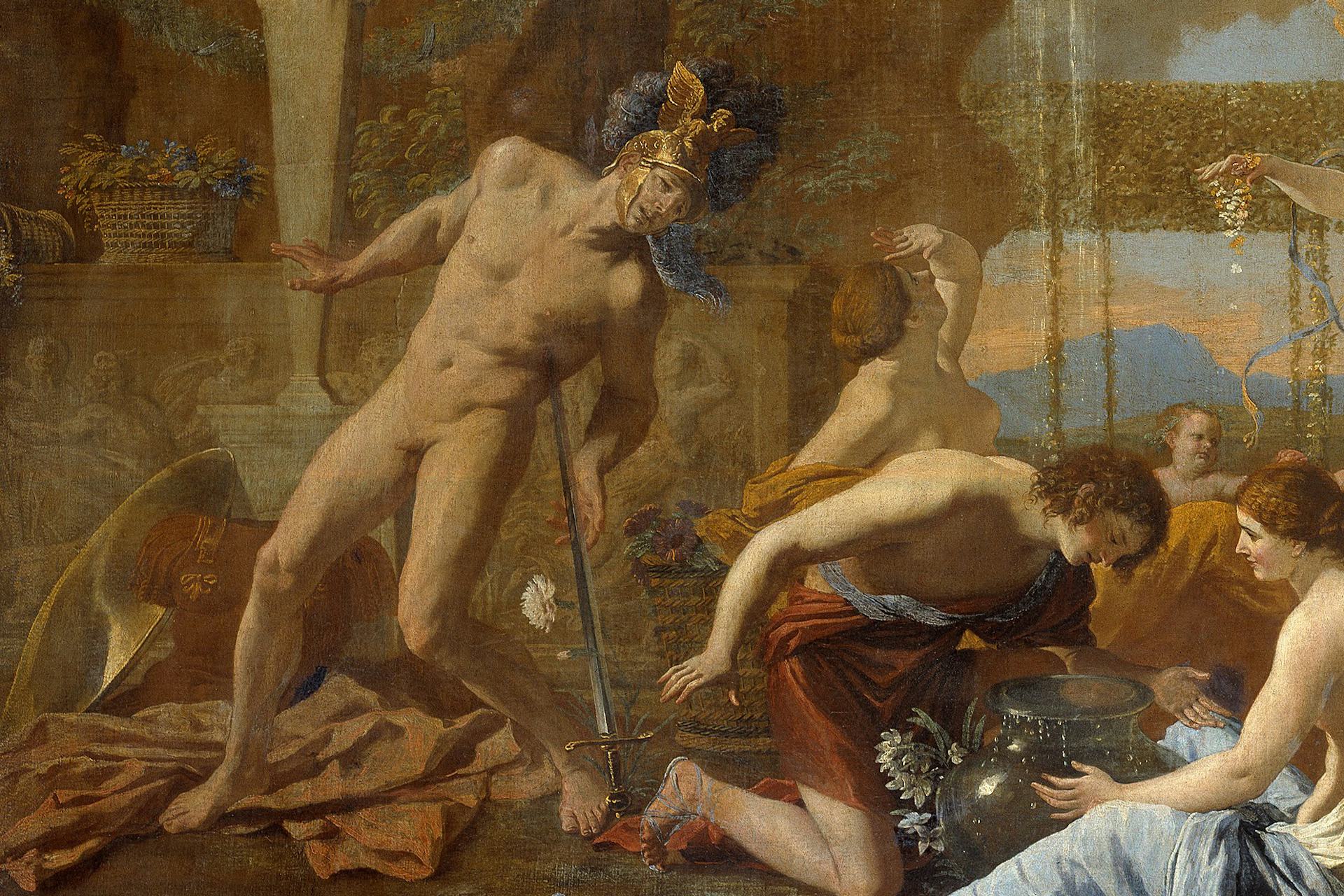
Overview
Ajax the Greater, also known as “Ajax the Great,” “Greater Ajax,” or “Telamonian Ajax,” was the son of Telamon and a famous hero from the island of Salamis. He was best known for his impressive stature; in fact, he was usually said to have been the tallest and strongest hero of his time. He was called “Ajax the Greater” to differentiate him from “Ajax the Lesser,” a fellow warrior of much smaller stature.
Ajax the Greater fought with the other Greeks during the Trojan War, where he was regarded as second only to the mighty Achilles. Among other accomplishments, Ajax once fought Hector, the greatest of the Trojan heroes, to a draw. Unfortunately, the formidable Ajax also had a formidable temper. When Achilles’ armor was awarded to Odysseus rather than him, Ajax flew into a rage; he would have killed Odysseus had the goddess Athena not caused him to go mad and vent his anger on the army’s livestock. When Ajax came to his senses and realized his humiliation, he took his own life.
Etymology
In antiquity, the name “Ajax” (Greek Αἴας, translit. Aias) was sometimes said to have been derived from the Greek expression aiai, meaning “alas!”[1] One myth claimed that Ajax was named for the eagle (aietos in Greek) that appeared before his birth as a sign of his future strength (see below for more on this myth).
However, these should probably be regarded as folk etymologies. The true etymology of Ajax’s name—which may have been attested as early as the Mycenaean period (ca. 1600–1100 BCE)—remains obscure. It may be connected with aia, an early Greek word meaning “earth,” but this is far from certain.[2]
Pronunciation
English
Greek
Ajax Αἴας (translit. Aias) Phonetic
IPA
[EY-jaks] /ˈeɪ dʒæks/
Alternate Names
In English, Ajax’s name is often spelled “Aias,” a more accurate transliteration of the Greek. There is evidence that an earlier form of Ajax’s name was Aiwas; the name included a digamma, a letter that became obsolete relatively early in Greek history.[3]
Titles and Epithets
Ajax was known by a handful of epithets, the most distinctive being herkos Achaiōn, “bulwark of the Achaeans,” and pelōrios, “massive” (reflecting his great stature). He was also commonly known by the patronymic Telamōnios, “son of Telamon.”
Attributes and Iconography
Ajax the Greater came from Salamis, the largest island in the Saronic Gulf (located in central Greece, just south of Athens). When Ajax went with the Greeks to fight at Troy, he brought with him twelve ships from Salamis.[4]
Ajax was best known for his impressive stature. In Homer’s Iliad, the Trojan king Priam describes him as “valiant and tall, towering above the Argives with his head and broad shoulders.”[5] According to Philostratus, the tomb of Ajax was swept out to sea during the time of the Roman emperor Hadrian. The bones that were recovered (and eventually reinterred by Hadrian) were of superhuman size, supposedly revealing that Ajax had been 11 cubits (16.5 feet) tall.[6]
In both physical beauty and fighting ability, Ajax was second only to his cousin Achilles.[7] In some traditions, Ajax was invulnerable everywhere except for his armpit (similar to Achilles, who was often said to have been invulnerable everywhere except for his heel).[8]
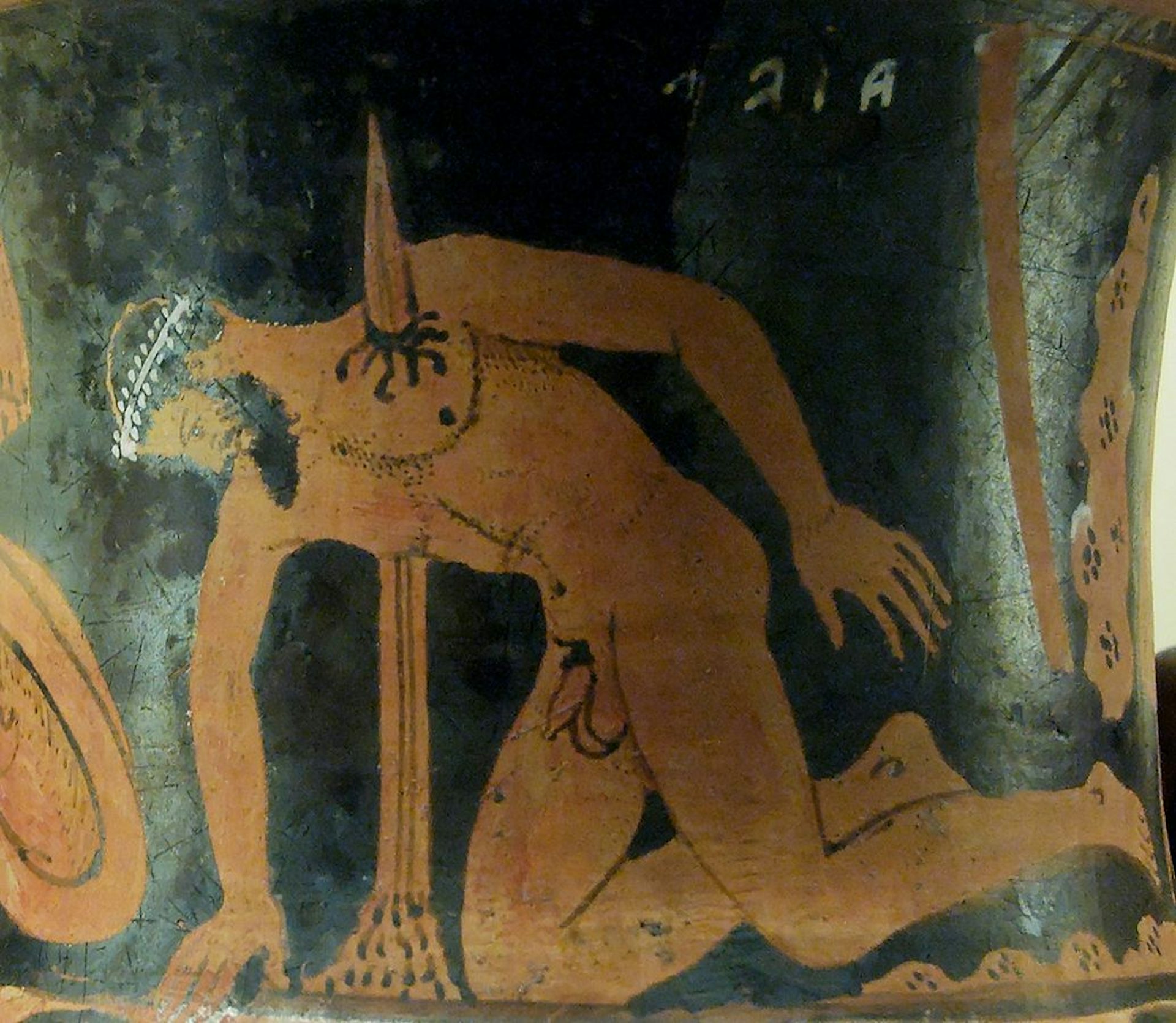
Etrurian red-figure calyx krater showing the suicide of Ajax (ca. 400–350 BC). Said to be from Vulci. This representation (and others like it) seems to illustrate a myth that Ajax was invulnerable everywhere except for his armpit (note the strange angle of the sword here). British Museum, London, UK.
JastrowPublic DomainAjax’s arms were worthy of his size. He carried a massive shield made “of sevenfold bull's-hide upon the outermost bronze”;[9] it was large enough for his half-brother Teucer to hide behind it with him.[10]
Ajax also had a beautiful sword that he received as a token of respect from Hector after the two heroes fought to a draw. It is described by Homer as a “silver-studded sword with its scabbard and well-cut baldric.”[11] According to most traditions, Ajax used this very sword to kill himself.
Ajax was a popular subject for ancient Greek artists from as early as the seventh century BCE. He was typically represented as a bearded, well-muscled warrior. There are numerous representations of him dueling Hector, playing dice with Achilles, carrying Achilles’ dead body to safety, or of his suicide.[12]
Family
Ajax the Greater had a highly distinguished pedigree. His father was Telamon, the king of Salamis and a great hero in his own right. His mother was called either Periboea[13] or Eriboea.[14] Telamon was a son of Aeacus, a grandson of Zeus, and the brother of Achilles’ father Peleus. This made Ajax the great-grandson of Zeus and the cousin of Achilles.
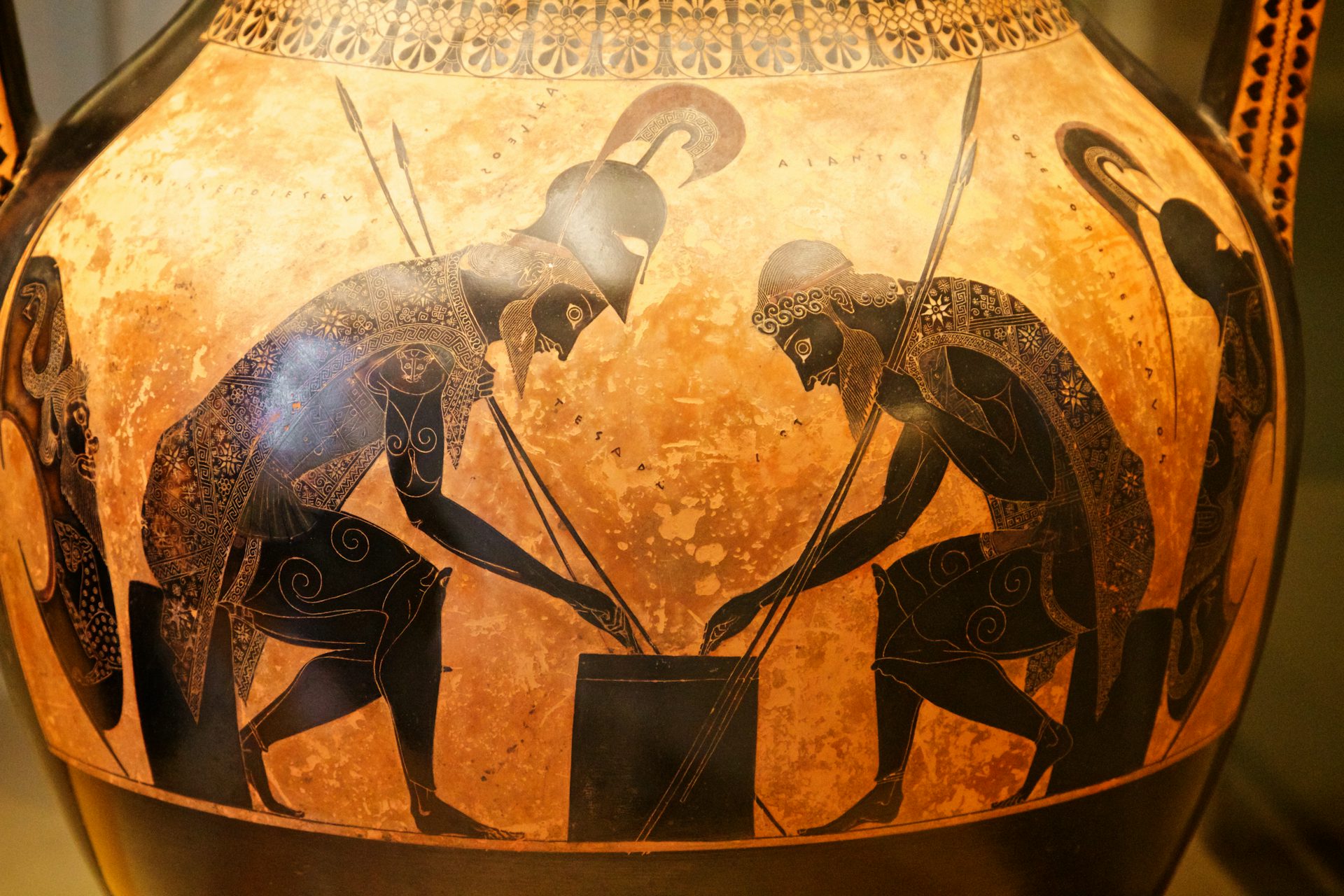
Attic black-figure amphora showing Ajax and Achilles playing dice, signed by Exekias (ca. 540–530 BCE). From Vulci. Vatican Museums, Vatican.
Nick ThompsonCC BY-NC-SA 2.0Family Tree
Parents
Father
Mothers
- Telamon
- Eriboea
- Periboea
Siblings
Brother
- Teucer
Consorts
Lovers
- Tecmessa
- Glauce
- Lysidice
Children
Sons
- Eurysaces
- Aeantides
- Philaeus
Mythology
Origins and Early Life
Before Ajax was born, his father, Telamon, was visited by the great Heracles. Standing on his famous lion skin, Heracles prayed that Telamon’s son would grow up to be as strong as that lion skin. Zeus signaled that he would answer this prayer by sending out an eagle (aietos in Greek); Ajax was ultimately named for the bird.[20]
This tradition was later expanded, with some authors suggesting that Heracles went on to wrap the newborn Ajax in his lion hide. As a result, Ajax became invulnerable everywhere except for the one spot where the hide had not touched him—his armpit.[21]
As a young man, Ajax was among the suitors of the beautiful Helen of Troy, offering lavish gifts in exchange for the girl’s hand. Ever the brash and blustering warrior, Ajax promised numerous cattle and sheep—which he would acquire by raiding his neighbors’ lands.[22] Luckily for his neighbors, Ajax did not win Helen (that privilege went instead to Menelaus, the brother of the powerful Agamemnon).
The Trojan War
Origins
After Helen ran off with the Trojan prince Paris, her husband Menelaus and his brother Agamemnon began assembling a Greek force to sail to Troy and win her back. Because all of Helen’s suitors—including Ajax—had once sworn an oath to protect her marriage at all costs, the men had no choice but to help Menelaus get her back.[23]
When the Greek army arrived at Troy (located on the northwest tip of modern-day Turkey), Ajax quickly distinguished himself as a fighter. Along with the other Greek leaders, he took to raiding the cities and towns near Troy for supplies, livestock, and slaves.
During one of these raids, Ajax captured a Phrygian princess named Tecmessa. This Tecmessa became Ajax’s concubine and gave him a son; in some ancient accounts, she appears to have actually fallen in love with her captor, thus becoming an early victim of Stockholm Syndrome.[24]
Ajax in the Iliad
Ajax is an important character in Homer’s Iliad, which is set during the ninth year of the ten-year-long Trojan War.
When the Trojan hero Hector challenged the bravest of the Greeks to face him in single combat, Ajax and several others volunteered. When the lot fell to Ajax, the Greeks rejoiced and the Trojans trembled (even Hector’s heart, says Homer, began to beat faster). In the ensuing fight, Ajax clearly had the upper hand (at one point, he hurled a boulder at Hector and knocked him on his back). But nightfall ended the duel before Ajax could kill Hector. The two heroes exchanged gifts as a token of respect and went back to their armies.[25]
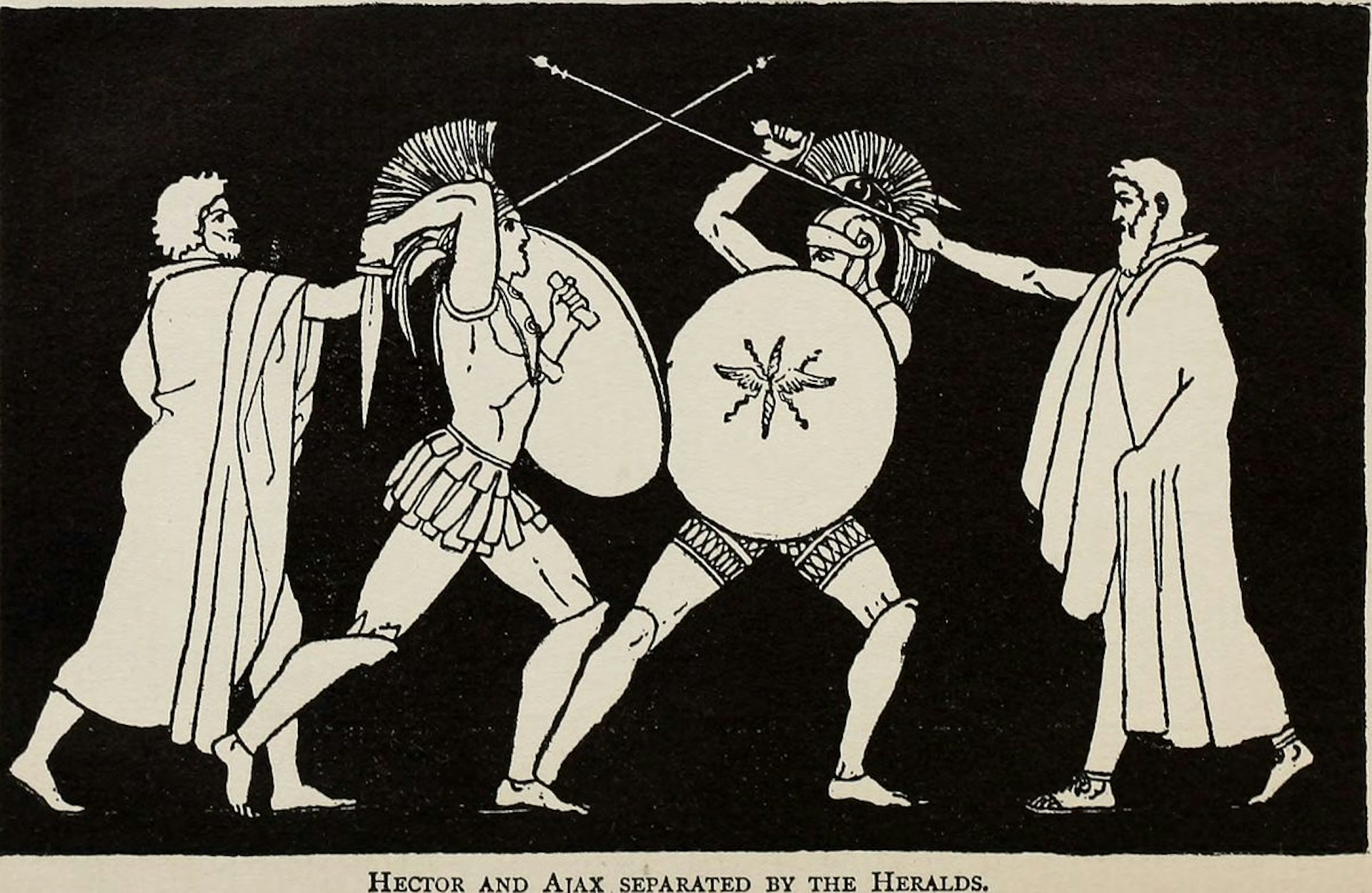
Illustration of Hector and Ajax being separated by the heralds after their duel by John Flaxman. From John Alfred Church, The Story of the Iliad (London: Macmillan 1911).
Internet Archive Book ImagesPublic DomainAfter Achilles stopped fighting because of a quarrel with Agamemnon, the commander-in-chief of the army, Ajax was sent (together with Odysseus and Phoenix) to try and smooth things over. The three men offered Achilles gifts of reconciliation from Agamemnon and begged him to help his fellow soldiers. Ajax himself appealed to Achilles as a friend and relative.[26] But the proud Achilles refused to listen.
During Achilles’ extended absence from the fighting, Ajax distinguished himself as the bravest and most successful defender of the Greek camp. As Hector and the Trojans tried to break through the Greek defenses and burn the ships, it was Ajax who led the countercharge.[27] At one point, Ajax again nearly managed to kill Hector.[28]
When Achilles’ closest friend Patroclus was killed by Hector, it was Ajax who, with the help of Menelaus, managed to rescue his body so that it could receive a proper funeral.[29]
Later, Ajax participated in the lavish funeral games Achilles threw for Patroclus. During these games, according to Homer, Ajax wrestled Odysseus to a draw in a match that pitted Ajax’s raw strength against Odysseus’ cunning[30]—an event that perhaps foreshadowed their later rivalry.
Death
As the war wore on, great heroes continued to fall on both sides. When Achilles was killed by the Trojan prince Paris, it was Ajax who carried the body off the battlefield while Odysseus held the Trojans back.[31]
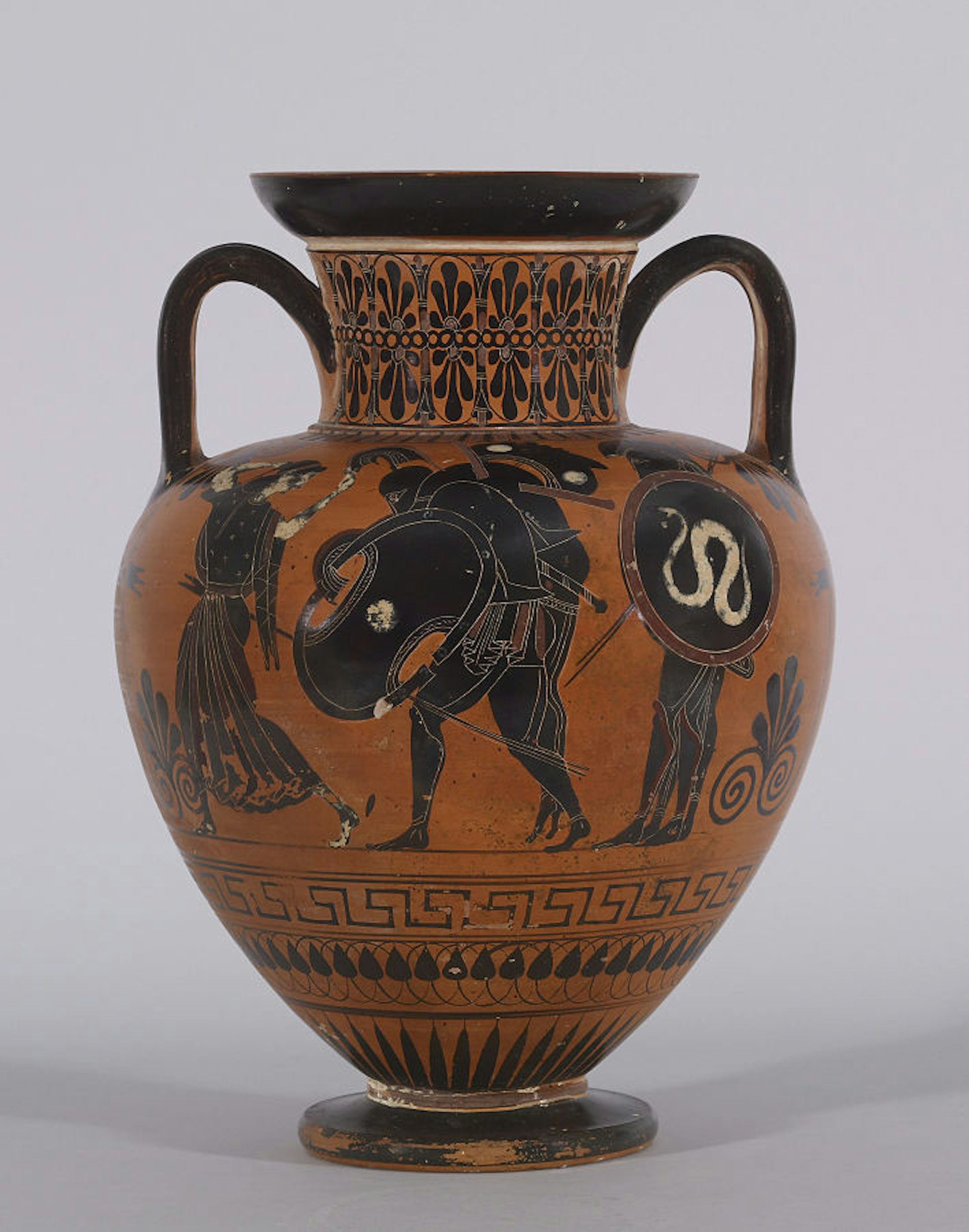
Black-figure amphora showing Ajax carrying the body of the dead Achilles by the Antimenes Painter (ca. 530–520 BCE).
Walters Art MuseumCC0After Achilles was given a great funeral, it was announced that his armor—fashioned by the smith god Hephaestus himself—would go to the greatest of the surviving Greek heroes. The only man who dared challenge Ajax for the title was Odysseus: though he conceded that Ajax was the strongest fighter in the Greek army, Odysseus claimed that his cunning and strategic mind were more valuable.
When Odysseus was indeed judged the greatest of the Greeks and awarded the armor, Ajax was consumed by hatred and rage. He tried to kill Odysseus and the other Greek leaders, but the goddess Athena, who loved Odysseus, caused him to go mad and kill the army’s livestock instead. Eventually, Ajax came to his senses. Realizing he would never be able to live down his humiliation, he committed suicide by falling on his sword.[32]

19th century illustration of Ajax preparing to commit suicide, after black-figure amphora by Exekias (530–525 BCE).
Wikimedia CommonsPublic DomainThere were a handful of other, lesser-known versions of how Ajax died. In one, he was murdered under mysterious circumstances after feuding with Odysseus (this time over the Palladium rather than the armor of Achilles).[33] In another, he was killed in battle by Paris, who shot him with an arrow.[34] In still another, he was buried alive by the Trojans, who had learned that he was invulnerable to all wounds inflicted by a weapon.[35]
Some said that after Ajax died, the hyacinth flower either sprang up from his blood or began growing in his hometown of Salamis. The petals, whose shape recalls the hero’s name, were thought to commemorate him.[36]
In some early traditions, it appears that Ajax was denied the customary funerary honors on account of his attempt to murder the Greek leaders.[37] But in other traditions, he was buried by his brother Teucer,[38] by Achilles’ son Neoptolemus,[39] or by the entire Greek army.[40]
When Odysseus visited the Underworld in the Odyssey, he met the shade of Ajax and tried to speak with him. But Ajax, bitter about losing Achilles’ armor even in death, sulked away in silence.[41] In other traditions, however, Ajax did not go to the Underworld after he died but rather joined Achilles and other heroes on the Isles of the Blessed, sometimes called Leuce.[42]
Worship
The center of Ajax’s hero worship was his homeland of Salamis. There, he had a temple and an ivory statue and was honored with a festival, the Aianteia.[43] At Athens, not far from Salamis, Ajax was one of the “eponymous heroes” (i.e., one of the Athenian tribes was named after him); there, too, he appears to have been worshipped and to have had a festival.[44] Ajax was also worshipped in the Troad,[45] at Byzantium,[46] and possibly at Megara.[47]
Pop Culture
Though Ajax is less familiar today than many other heroes of the Trojan War (such as Achilles, Odysseus, or Hector), he has continued to live on in modern pop culture. For example, he is played by the actor and former professional wrestler Tyler Mane in the 2004 film Troy. He also appears in an episode of the 1990s TV series Hercules: The Legendary Journeys.